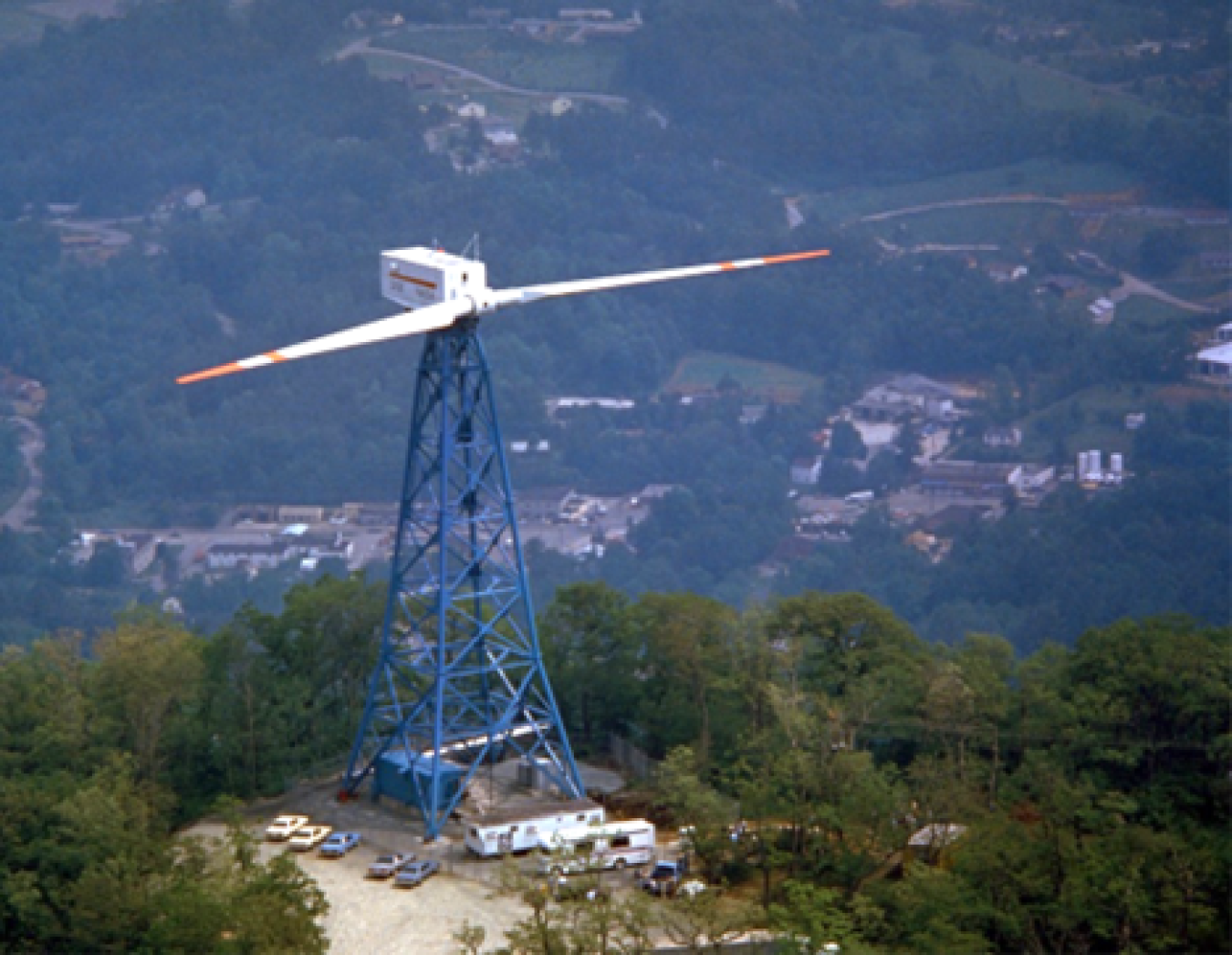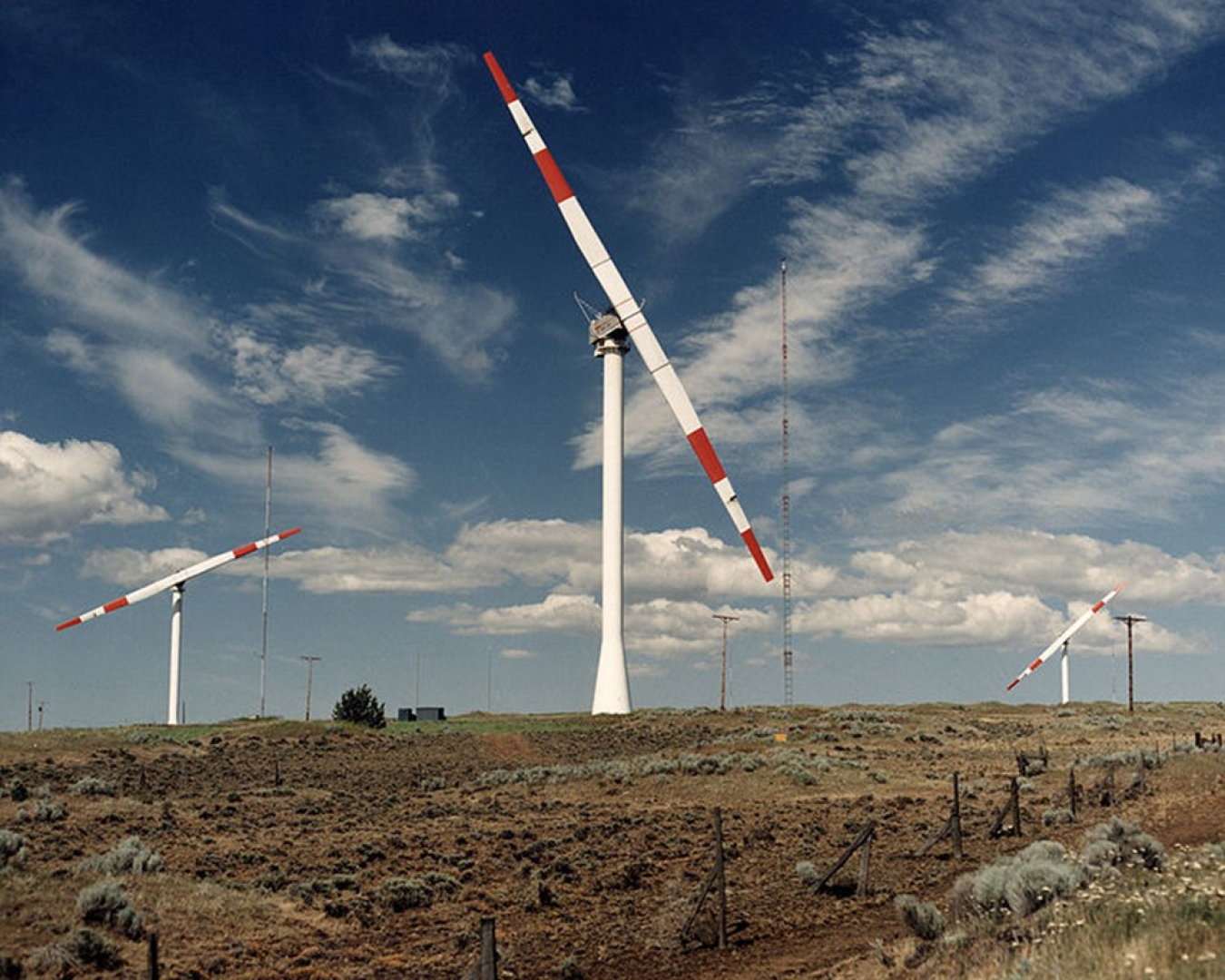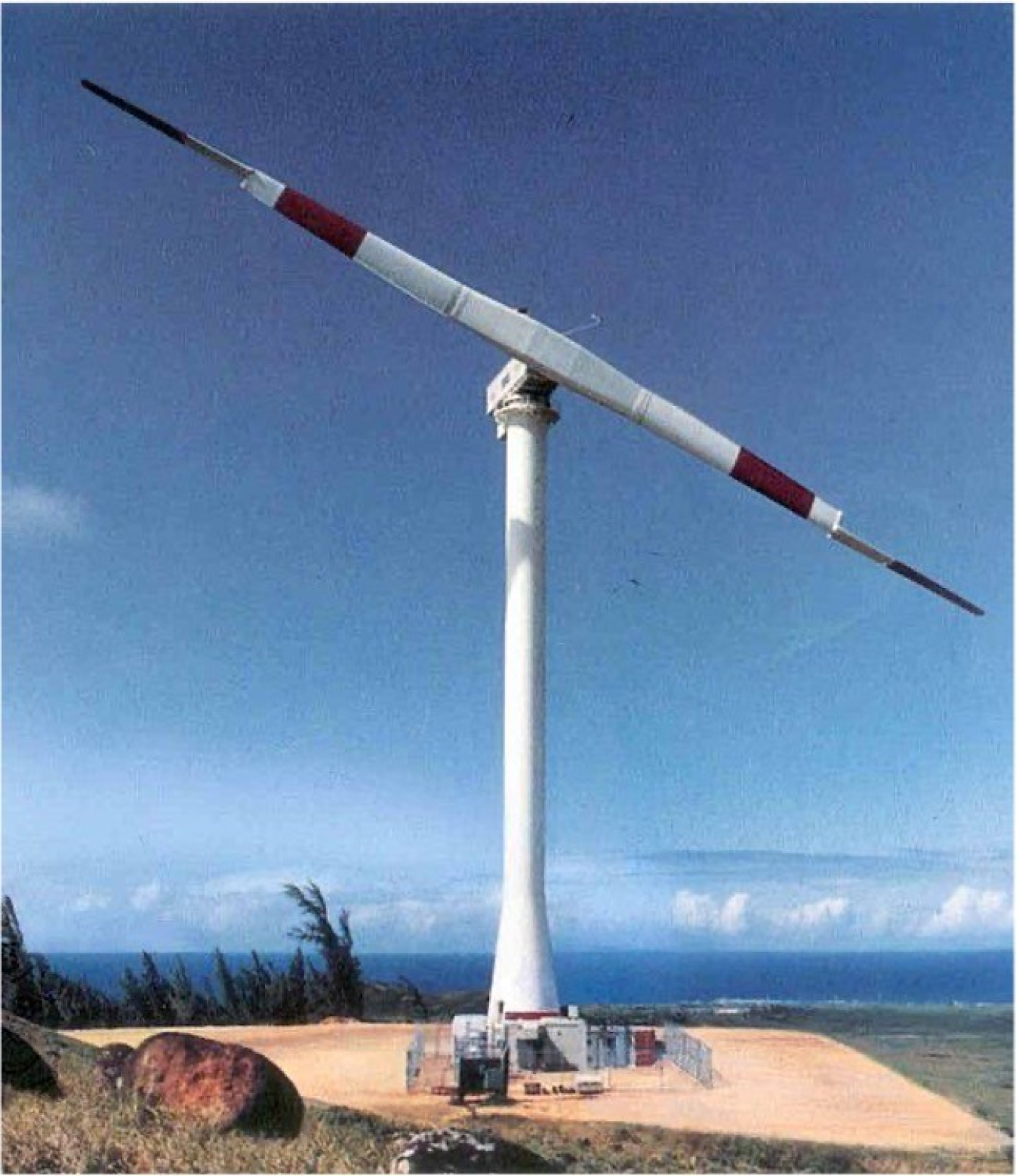The DOE-NASA Mod-Series Wind Turbine Program precedes the modern wind energy industry in the United States. For over two decades, with five distinct models built, the program helped shape a cost-competitive wind energy industry through funding and R&D.
Wind Energy Technologies Office
April 23, 2024In the United States, interest in wind power as a source of electricity dates back to at least the 1880s, when Charles Brush built and operated a 12-kilowatt (kW) wind turbine in Cleveland, Ohio. By the early 20th century, several manufacturers were developing and selling small commercial wind turbines for rural use in locations not yet served by central grid-connected electricity.
The world’s first megawatt (MW)-scale wind turbine was designed in the 1940s by Palmer Putnam and manufactured in Vermont by the S. Morgan Smith company. This 1.25-MW wind turbine operated for 1,100 hours before one of its two blades failed. Material shortages from the nation’s World War II effort postponed repairs and, later, further testing was halted because the outlook for commercially competitive electricity from this machine was not encouraging.
In the mid-1900s, significant wind power research was also taking place in Europe, especially Denmark. In the 1950s, Danish engineers designed and built a 200-kW wind turbine in Gedser, Denmark—a three-bladed, horizontal-axis, upwind turbine (which faces into the wind as opposed to downwind turbines that face away from the wind) designed to decrease power production at higher wind speeds, ensuring safe and reliable functionality. That wind turbine operated with high reliability from 1957 to 1967 and became the basis for the Danish design that influenced much of wind turbine development in Denmark and Germany throughout the 20th century. At the same time, in Germany, Ulrich Hutter was designing a 2-bladed, downwind-configured wind turbine that pioneered the use of fiberglass blades.
Back in the United States, in the early 1970s, the country and much of the developed world experienced its first significant oil embargo. This quickly led to strong national interest in alternative technologies for electricity generation, including wind and solar energy. By applying substantial public funding, the National Science Foundation initiated research and development programs in these technologies. Soon, the newly formed Energy Research and Development Agency assumed management of these programs and eventually became the U.S. Department of Energy (DOE).
For wind energy research, DOE turned to experts at the National Aeronautics and Space Administration (NASA), including the Jet Propulsion Laboratory and NASA’s Lewis Research Center in Cleveland, Ohio (now the Glenn Research Center). Aerospace companies also contributed expertise and manufacturing capabilities. Together, these researchers, scientists, and engineers, supported by DOE funding, designed a program that built on existing domestic and European expertise to develop utility-scale wind turbines that would provide commercial electric power in the United States.
Program Aims to Develop Knowledge Base of Wind Energy Production
NASA engineers studied early utility-scale wind turbines, including the Danish and Hutter designs.
Experts generally agreed that cost-competitive wind energy would require large, utility-scale turbines—able to generate 1 MW of power or more—that could optimize design, manufacturing, installation, and operation. DOE and NASA envisioned rapid scale-up for what it called the Mod-Series Wind Turbine Program—from 100-kW (Mod-0) to larger, multi-MW prototypes.
The Mod-Series Program aimed to develop, with industry partners—initially from the aerospace sector— utility-scale wind turbines capable of reliably providing electric power at commercially competitive costs and to enable their introduction into the electric power market.

Ambitious Program Succeeds in Informing Today’s Wind Energy Industry
The Mod-Series Program ran from the late 1970s through the 1990s. The original goal of the Mod-Series Program turned out to be overly ambitious. Driven by urgent concerns over oil supply disruptions, each stage of the Mod-Series Program had little time and opportunity to internalize lessons from previous stages.
Even so, examining wind turbine architecture options and MW-scale testing of drivetrain components and complete turbines led to advances that provided important contributions to the commercial success of wind power. These activities required substantial funding and access to a wide range of relevant expertise—neither of which were available at the time.
It also became clear that, although they had extensive technical expertise, large aerospace firms that operated primarily in the government-funded research arena were unlikely to commercialize wind power. By contrast, smaller entrepreneurial firms focused on emerging new markets in the energy space were more likely to commit to a business vision based on wind energy. After the Mod-Series Program, most of the DOE’s efforts to advance wind energy technology were conducted in partnership with industrial firms specializing primarily on the commercial wind power business.
In the 1980s, oil prices dropped quickly and remained low, undercutting the program’s urgency. Nonetheless, the Mod-Series Wind Turbine Program produced a great deal of information and expertise that helped enable a commercial wind energy industry to take hold in the United States.


Program Contributes to Future Wind Energy Development
Although the Mod-Series Program did not by itself initiate a commercial wind energy industry, it contributed several key advancements to today’s wind energy industry, including:
- Fiberglass composites—the preferred blade material when considering weight, cost, and reliability.
- Tubular steel towers—a design for noise reduction and performance.
- Upwind rotors—the preferred orientation due to lower noise output and less stress on blades.
- Turbulence and gust loading fixes—the balancing of the back-and-forth and up-and-down motions of a wind turbine during its rotations
- Variable-speed operations—a
- Wind turbine placement and spacing improvements—solutions to reduce turbine-to-turbine wake effects.
- Wind turbine interference with electromagnetic communications—prospective ways to mitigate or avoid such interference.
- Interconnection and operation with local electric grids—a successful wind turbine operating with local electric grids.
The Mod-Series Program catalyzed essential technological leaps that helped lay the foundation for modern wind turbine technology.

